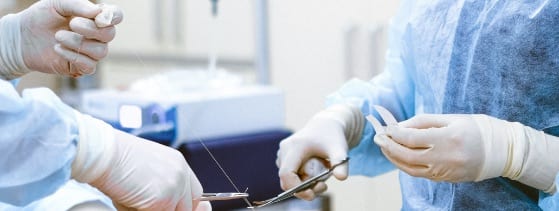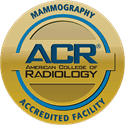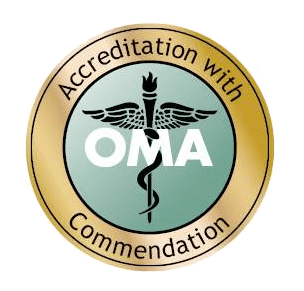Frequently Asked Questions for Joint Replacement Patients
Here are answers to questions that patients often have prior to scheduling an elective orthopaedic surgery at Bay Area Hospital. These and other questions are addressed during our “Coasting to Recovery” class, designed for those having total knee or total hip surgery.
Prior to Surgery
Should I bring my walker or crutches to the hospital?
The hospital has equipment for use during your stay, but you may bring your own equipment. Your physical therapist can assure your equipment is properly fit and in good working order for you. Be sure to label your equipment with your name.
Where can I purchase dressing supplies for my surgical incision?
You will have an Aquacel AG dressing placed at the time of discharge. You will not need to change this dressing. You will leave it in place for seven days, then remove it and discard. By this time you should no longer need a dressing, however, if you want to cover it with gauze to keep the staples from catching, you can purchase gauze at any pharmacy.
How do I obtain the necessary equipment needed for activity and home use?
You will be given tools for activities of daily living by your occupational therapist while you are in the hospital. However, if you need a walker or a raised toilet seat, you may want to shop the thrift stores. Not all insurance companies, including Medicare, cover equipment needs, so know your benefits. If you don’t have what you need by the time you have surgery, your case manager can be of assistance.
During Your Hospital Stay
When will my family or friends be able to see me after surgery?
Your family and friends can wait in the family waiting areas until you are settled in your room and all needed nursing assessments are completed. Rest is important and is frequently interrupted by hospital staff. You can request “No visitors,” even if it’s for only a short time during your day. Family members or friends who are ill should wait to visit until they are feeling well again. All visitors should wash or sanitize their hands. We realize the importance of the support of family and friends for your social and emotional well-being. Your room has been designed to accommodate them.
How soon will I be eating after surgery?
To allow your body to recover from anesthesia and decrease problems with nausea and vomiting, gradually taking fluids and food is best. You will start on clear liquids and advance to a normal diet as tolerated.
How soon will I be able to get out of bed after surgery?
You will be assisted to reposition in bed for your comfort or dangle your feet at the bedside with assistance. You will start your activity with the physical therapist and/or nursing the day of your surgery.
How much weight will I be able to put on my operative leg?
You are able to put as much weight on your operative leg as you can tolerate, unless your surgeon is specific about bearing weight. Lifting with your affected arm after shoulder surgery is totally restricted until your physician tells you otherwise. Your physical therapist or nurse will let you know of any weight-bearing restrictions.
How will I be able to toilet myself after surgery?
If you feel the need to empty your bladder or for a bowel movement, we will provide assistance to the bathroom toilet or bedside commode depending on your abilities and tolerance.
How will I bathe while I’m in the hospital?
The nursing staff will provide assistance to freshen up daily. As you are able to do more, we will encourage you to bathe yourself daily. We will provide you with disposable bath wipes for your bath because they have been proven to be more effective for infection control than bathing with a basin.
When will my dressing be changed after surgery?
Most surgeons will leave the surgical dressing intact after surgery. Your dressing may need to be changed depending upon any wound drainage. Your dressing will be changed prior to discharge. You will receive discharge instructions on wound care and dressing changes before going home.
How long will I be in the hospital?
Your length of stay depends on the goals to be accomplished and how you progress after surgery. Certain goals will need to be accomplished before you go home, like walking with minimal assistance and pain managed on oral pain medications. Some patients may discharge the same day as their surgery while others may have a one night stay. Your discharge will be when it’s clinically appropriate.
What transportation will I need to go home from the hospital?
You may go home in a private vehicle of your choice. Be sure the vehicle has plenty of legroom, a seat that reclines and is not too high or too low to get in and out of safely. You will need assistance with transfers in and out of the vehicle until you are stronger and able to do more for yourself. Local transportation services to home are available. There is a fee for this service. Let your nurse or discharge planner know if you would like this arranged.
Will I be prescribed a blood thinner on discharge to help prevent blood clots?
Depending on your health history, you may be placed on Xarelto (rivaroxaban) or a coated Aspirin. If you are currently taking a blood thinner, you generally resume taking the medication you are currently prescribed after surgery. You will be provided education and written information on what blood thinner you’ll be taking after you discharge home and what to monitor while on this type of medication.
After You Leave the Hospital
What if my pain is not managed adequately at home?
You will need to continue to take pain medication two or three times a day — more if needed — to adequately control your pain when you go home. Ice can be helpful to control swelling and relieve pain. The need for pain medication should lessen within a week. Notify your physician if your pain is not relieved by medication and other therapies used.
I have steps or stairs at home. Who will teach me to go up and down them?
Your physical therapist will teach you how to safely climb up and down steps or stairs. If your environment at home has steps or stairs, you may want to modify your living situation so you do not have to climb up and down steps or stairs on a daily basis.
When will the clips in my incision be removed?
This is usually done during your first follow-up appointment with your orthopedic surgeon or physician’s assistant about 1 ½ to 2 weeks after surgery.
How soon will I be able to return to normal daily activities?
You will have a modified lifestyle during the first six weeks with limited activities and can return to normal daily activities within three to six months.
When will my partner and I be able to be intimate?
You need to be aware of certain precautions with regard to positions during intimacy. Talk with your orthopaedic surgeon at your first follow-up appointment.
When will I be able to drive?
Certain activity restrictions may keep you from driving safely. You will need to have someone drive you to your appointments until these restrictions are no longer a consideration. Talk with your surgeon during your follow-up appointment.














